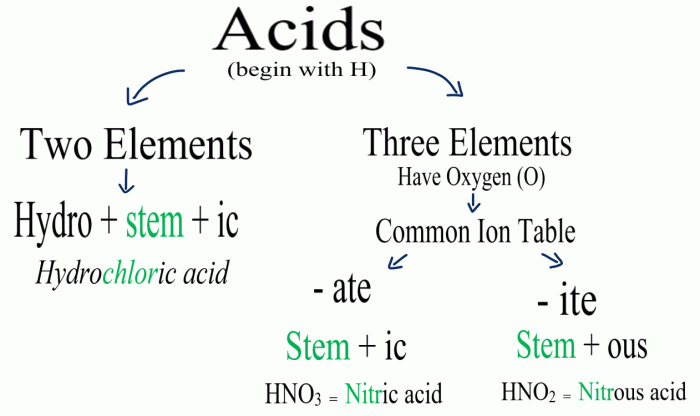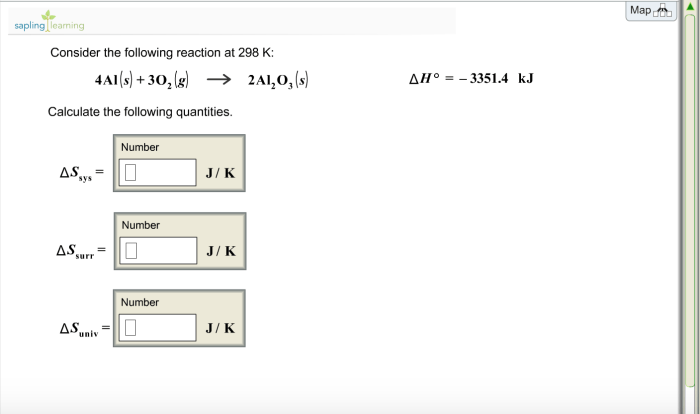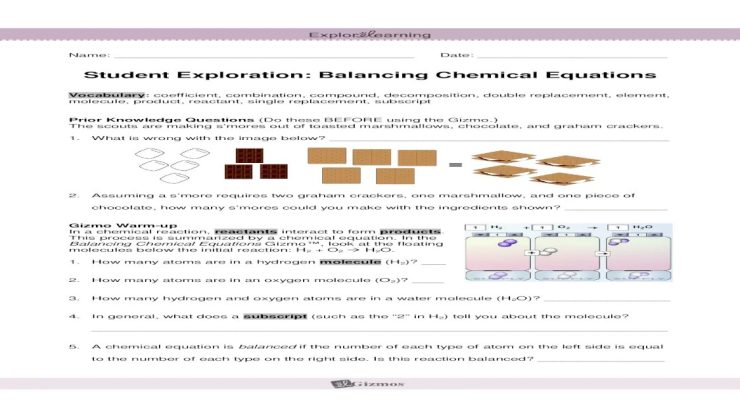Acids and Bases Chemistry Worksheet Answers: A Comprehensive Guide delves into the fundamental concepts, properties, and applications of acids and bases. This guide provides a comprehensive overview of the topic, offering clear explanations and engaging examples to enhance understanding.
Throughout this guide, you will explore the definitions and properties of acids and bases, their significance in everyday life, and the principles of acid-base reactions. Additionally, you will gain insights into pH calculations, titration experiments, and the multifaceted applications of acids and bases in chemistry.
1. Definitions and Concepts
Acids and bases are two fundamental chemical concepts that play a crucial role in various scientific disciplines and everyday life. The Arrhenius theory defines acids as substances that release hydrogen ions (H+) when dissolved in water, while bases release hydroxide ions (OH-).
Acids are characterized by their sour taste, ability to react with metals to produce hydrogen gas, and turn blue litmus paper red. Bases, on the other hand, have a bitter taste, feel slippery to the touch, and turn red litmus paper blue.
The pH scale is used to measure the acidity or basicity of a solution, with pH values ranging from 0 to 14. Acids have pH values below 7, while bases have pH values above 7. Neutral solutions have a pH of 7.
The conductivity of acids and bases is also an important property. Acids are good conductors of electricity due to the presence of free ions, while bases are generally poor conductors.
2. Acids and Bases in Everyday Life
Acids and bases are found in numerous everyday products, including:
- Lemon juice:Contains citric acid, a weak acid used in food preservation and as a cleaning agent.
- Baking soda:Contains sodium bicarbonate, a weak base used as a leavening agent in baking and as a cleaning agent.
- Vinegar:Contains acetic acid, a weak acid used as a food preservative, flavoring agent, and cleaning agent.
Acids and bases also have various applications in industries such as:
- Food processing:Acids are used to preserve food, while bases are used to neutralize acids and adjust pH levels.
- Medicine:Acids are used to treat indigestion and ulcers, while bases are used to neutralize stomach acid.
- Cleaning:Acids are used to remove stains and disinfect surfaces, while bases are used to remove grease and dirt.
3. Acid-Base Reactions

Acid-base reactions, also known as neutralization reactions, occur when an acid and a base react to form a salt and water. The salt is an ionic compound that contains the cations from the base and the anions from the acid.
The strength of an acid or base refers to its ability to donate or accept protons (H+ ions). Strong acids donate protons easily, while weak acids donate protons less easily. Similarly, strong bases accept protons easily, while weak bases accept protons less easily.
The strength of an acid or base can be determined by its dissociation constant (Ka or Kb). The larger the dissociation constant, the stronger the acid or base.
4. pH Calculations
pH is a measure of the acidity or basicity of a solution. It is calculated using the following equation:
pH = -log[H+],
where [H+] is the molar concentration of hydrogen ions in the solution.
The pH of a solution can be calculated using various methods, including:
- pH paper:Dipsticks treated with indicators that change color depending on the pH of the solution.
- pH meter:An electronic device that measures the pH of a solution using a pH electrode.
- Titration:A technique that involves adding a known amount of acid or base to a solution until the reaction is complete.
5. Titration Experiments
Titration experiments are used to determine the concentration of an unknown acid or base. The experiment involves adding a known volume of a standardized acid or base to a solution of the unknown acid or base until the reaction is complete.
The endpoint of the titration is the point at which the reaction is complete, and this is indicated by a color change of an indicator or a sudden change in the pH of the solution.
The concentration of the unknown acid or base can be calculated using the following equation:
M1V1 = M2V2,
where M1 and V1 are the molarity and volume of the known acid or base, and M2 and V2 are the molarity and volume of the unknown acid or base.
6. Applications of Acids and Bases in Chemistry
Acids and bases are widely used in various fields of chemistry, including:
- Qualitative and quantitative analysis:Acids and bases are used to identify and determine the concentration of various substances.
- Organic chemistry:Acids and bases are used as catalysts in various organic reactions, such as acid-catalyzed esterification and base-catalyzed hydrolysis.
- Environmental chemistry:Acids and bases play a crucial role in environmental processes, such as acid rain and water treatment.
FAQ Summary: Acids And Bases Chemistry Worksheet Answers
What is the difference between an acid and a base?
An acid is a substance that donates protons (H+ ions), while a base is a substance that accepts protons.
What is the pH scale?
The pH scale is a measure of the acidity or basicity of a solution. It ranges from 0 to 14, with 0 being the most acidic and 14 being the most basic.
What is a titration experiment?
A titration experiment is a laboratory procedure used to determine the concentration of an unknown acid or base by reacting it with a known concentration of a strong acid or base.


